The endless drafting debate – Jimmy Riccitello speaks
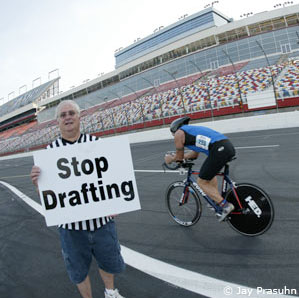
Complaints about drafting are often heard after various triathlons, but more so after certain events. So who is to blame? Should we point fingers at the athletes themselves, the race directors or the officials? Slowtwitch talked to Jimmy Riccitello about this issue.
ST: Jimmy, a hot debate came up on Slowtwitch after Ironman Canada where pro Scott Curry said that not enough is done to prevent drafting in the pro ranks. What is your opinion here?
Jimmy: Scott is entitled to his own opinion. During my racing career, I watched Ironman do more to prevent drafting in the age group and pro ranks than any other organization. Now as an official, I continue to be impressed with Ironman's broad and immediate changes to better prevent drafting. Ironman has mandated more officials for the pros and age groupers, which is crucial. Other changes include: notifying an athlete at the time the infraction, informing the athlete what the infraction is, lengthening the pro and age-group draft zone, not allowing the pros to slipstream when passing (must move out to the side once inside the draft zone), the introduction of a time trial start at an Ironman distance event (IMKY), and the use of penalty tents on the bike course so that draft marshals can temporarily remove a penalized athlete from the race, which works to better break up packs.
Removing the athlete from the group, in and of itself, has a tremendous impact on reducing drafting. With the previous system, the athlete simply received a time penalty at the end of the race. The previous system didn’t really do a lot to reduce drafting during the race. Athletes may have received penalties, but the packs did not break up. As any athlete knows, packs travel much faster than single athletes, and seriously affect the outcome of the race. The four minute penalty added to one's time at the end of the day did not do much, in my opinion, to deter drafting or break up packs. Generally, the time gained in a pack is much greater than four minutes over the course of the race.
My philosophy, and the one of Ironman is that we have to focus on breaking up the packs during the race. Allowing officials to notify athletes on the spot, at the time of the infraction, and having the athlete serve the penalty on the course removes the athlete from the pack. Other athletes see the athlete receiving the penalty (a red card) on the spot, and this further works to break up the pack. Breaking up the packs, and preventing them from forming, leads to a more accurate (and fair) race outcome as compared to simply adding four minutes to one's time.
Regarding Ironman Canada: I wasn’t there. But the Head Referee is an experienced USAT official and an experienced UCI official. Draft marshals can only call infractions that they witness. Sometimes it’s impossible and unsafe to be where the athletes are due to the presence of traffic or due to road conditions.
ST: Clearly certain races are more often associated with heavy drafting such as IM Florida in Panama City, FL and the 70.3 World Championships in Clearwater, FL. Is it possible to race these races clean? And the emphasis here is the word race.
Jimmy: When draft marshals are not present, (most) athletes will cheat. It only takes a couple of blatantly drafting athletes to turn a perfectly clean group of riders into a "pack" of riders who are too close. My contention is that heavy drafting at certain races is caused more by a lack of coverage by the officials than the flatness of the course. For example, IM Arizona is a three-loop flat course that generally has little drafting. IM Florida, on the other hand, has quite a bit of blatant drafting – mainly as a result of not enough officials on the one loop course. One loop is very hard to cover unless you have 15-20 draft marshals. Even with 15-20 it’s hard to be everywhere. 15 draft marshals in FL works out to 1 draft marshal for every 7-8 miles of course. In AZ, 15 draft marshals works out to 1 every 2 miles. When draft marshals aren’t there, (most) people will cheat. The visible presence of draft marshals is a huge deterrent and is a big factor in preventing packs from forming.
Clearwater has plenty of officials (15-20), but the narrow course and heavy car traffic leave us relatively ineffective. It’s very tough to safely get a motorcycle in position to properly make calls because the athletes must ride in the median lane and the two adjacent lanes are full of traffic.
Is it possible to race cleanly? Absolutely. Blatant drafting is a choice. We are all free to decide how we will race. The decision is not an easy one if you’re the slightest bit competitive. Especially when, despite the most rigid rule enforcement, the low road is the one most likely to produce the highest reward – in terms of your finish line results. I made difficult choices in my career that impacted me economically – in a negative way. It was hard, to occasionally watch some of my peers finish ahead of me when they really shouldn’t have. But every once and a while, the system worked in my favor, and ultimately made the reward that much sweeter. I’m not wasting time and energy worrying about those who are fooling themselves by drafting their way around the course. I am spending a good deal of time trying to catch them, though. We will never be able to completely eradicate drafting. But we are doing the best we can and if anyone wants to join me as a draft marshall to help, I welcome them.
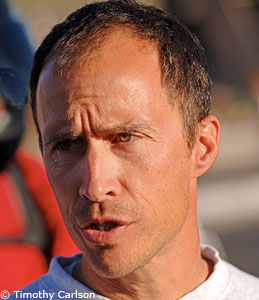
ST: Are the officials at the various races qualified and empowered enough to handle this various situations?
Jimmy: There is only one way to get experience as a draft marshal and that’s to get out and officiate. I’m very comfortable with the overall level of officiating I see at Ironman events. USAT has a great official’s program and the reality is that all of the Head Referees at Ironman events (except me) are USAT certified officials and most of the events use USAT officials. Like anything, some are better than others. But overall, I am impressed with the dedication and quality of those who officiate.
ST: In your opinion, what should the penalties be for pros and age groupers when it comes to drafting?
Jimmy: The more races I officiate, the more I believe that the drafting time penalty should be more severe. Right now the risk/reward balance favors the devious. For drafting in Ironman distance races, I’d like to see an 8’ first penalty and then 12’ for a second penalty.
ST: That being said, are you satisfied with the habits of riders at the races at which you and your crews officiate? If not, what needs to change, and is it in your power to make those changes?
Jimmy: When I first started officiating, I saw more people blatantly draft than I expected to see. But it has gotten better. I see more of an effort by athletes to not be in a compromising position. It’s noticeable and makes me feel like what I’m doing is worth it. If I didn’t see improvement and potential for more improvement, I would not have stuck around as long as I have.
I think we need to continue to make more athletes aware of the rules. Some athletes, for example, don't know that failing to make a pass once they’re inside the drafting zone results in a drafting penalty. I think that the athletes should demand the presence of more officials at certain events. More officials equals less drafting – it’s that simple.

ST: Do you believe the officiating on the bike course at Ironman-branded events yields better results than the officiating at those USAT events that have the same number of officials on the course?
Jimmy: Ironman rules are basically USAT rules, with a few differences. But I do feel like those few differences yield better results. The main differences are that Ironman uses a longer draft zone (7 meters between bikes vs. 7 meters front wheel to front wheel), allows 20 seconds to pass vs. 15 seconds, notifies athletes at the time of the penalty, and uses penalty tents on the course so that time penalties are served during the race instead of added to your overall time at the end of the race. For the reasons I mentioned earlier, it is my opinion that these rules work better to reduce drafting. Most athletes want to know what they were penalized for at the time of the penalty, not after the race. Serving the penalty on the course helps break up packs and allows athletes to know where they stand at the finish line. I also think it is helpful that Ironman and NAS demand 10-15 draft marshals.
ST: Did WTC leave USAT because the latter was not willing to allow WTC to fairly enforce its events?
Jimmy: WTC did not leave USAT. Several years ago, USAT refused to allow Ironman to use the same modified USAT rules that Ironman had used (with USAT's approval) in the past. USAT refused to sanction WTC unless WTC used USAT rules without the modifications. This forced Ironman to seek its own insurance and find its own officials. All of this happened within a couple of weeks of the event. I literally was asked to help only two weeks from the event.
ST: With the time elapsed between then and now, is there evidence of the bike leg being more fairly contested at WTC races?
Jimmy: We’ve tweaked things a little since the then – the biggest change being not pulling athletes over, but instead sending them to penalty tents. Without a doubt, Ironman rules work much better for Ironman distance events than the USAT pro stagger rule.
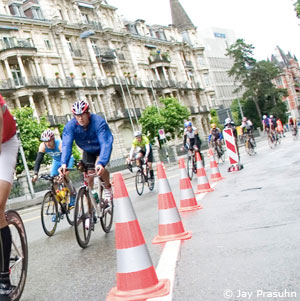
ST: Is there a difference between North American triathletes and European triathletes, in terms of what bike riding behavior considered legal and ethical? Do you perceive a higher level of tolerance for drafting at these European races, and if so does WTC think that's a problem worth solving?
Jimmy: When I raced in Europe, which was quite often, drafting was more tolerated. It is my understanding that things have not changed much in that regard. Therefore, when Europeans come here, there is an adjustment period. Once the European athletes become familiar with our rules and lack of tolerance for drafting, however, they race just as fairly as everyone else. I’ve had many European athletes say to me that they enjoy racing here because we try hard to enforce the drafting rules. They also comment on the level of respect athletes here show to the officials. I consider this positive feedback, which means a lot – especially since we’re seeing more and more foreign athletes racing in America.
ST: Drafting is unfortunately not the only way athletes cheat. Course cutting for example seems to be not uncommon either. What are your thoughts?
Jimmy: Considering the number of athletes in a race, I don’t think course cutting is common, but it does happen. There are many systems in place to catch course cutters, and Ironman does a great job of catching those athletes. We have an amazing timing system with an experienced group of people monitoring it. The design of the course and ample timing mats are crucial. I think it is a rare instance in which a course cutter does not get caught.
ST: And what is the measuring stick, that is, how will you know that the races are more fairly contested?
Jimmy: Feedback from the athletes is a good measuring stick and based on that feedback, I think the races are cleaner. From my perspective on the course, I see an improvement. That said, there’s always room for more improvement. I sincerely feel that Ironman and NAS are committed to continue to improve. I welcome any feedback, and welcome anyone who wants to become more involved as an official.


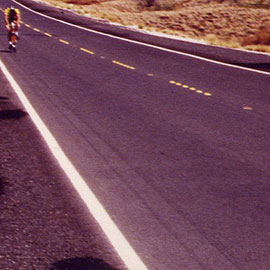
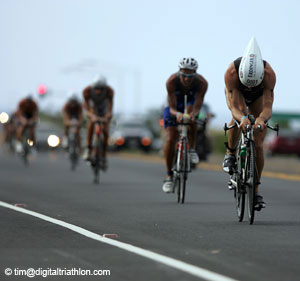
Start the discussion at slowtwitch.northend.network